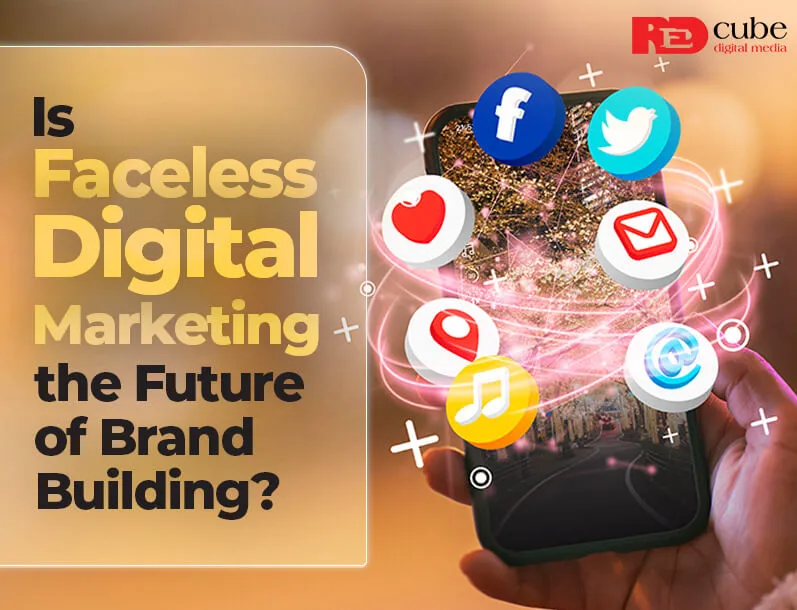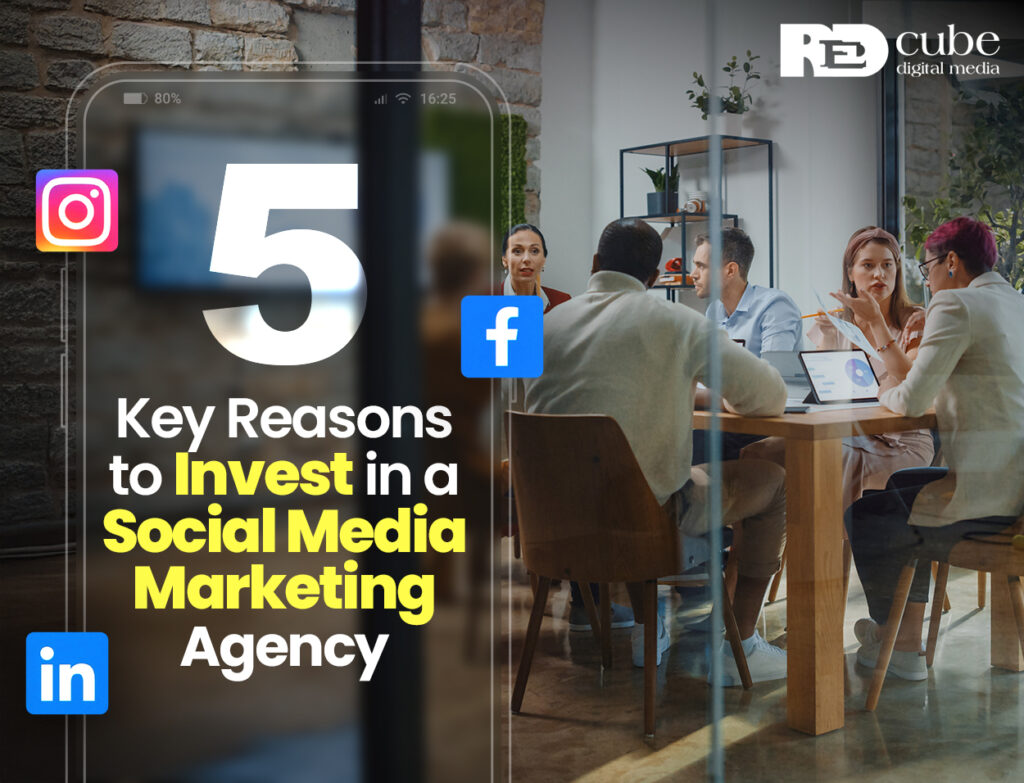Have you ever considered how some brands capture the hearts of millions without a recognizable face behind them? In a world where personal branding often takes precedence, the rise of faceless digital marketing disrupts our conventional understanding of identity and connection.
Imagine building a dynamic brand that truly resonates with your audience while maintaining complete anonymity. Is it truly achievable to create a profound presence without relying on the personal touch we’ve been conditioned to expect?
This in-depth guide will take you on a journey through the captivating realm of faceless digital marketing, showcasing how businesses can develop powerful brand identities and attain outstanding results without the constraints of traditional personal branding.
Join us as we dive into this exciting evolution and unveil the secrets to thriving in the digital landscape, even when there’s no face to align with your name.
What is Faceless Digital Marketing?
Faceless digital marketing represents a strategic approach where businesses build their online presence without relying on individual personalities or personal brands. Instead, the focus shifts to value delivery, brand messaging, and customer experience.
“In the digital age, your brand’s value proposition matters more than the face behind it.”-Neil Patel, Digital Marketing Expert
Key Statistics
- According to a 2024 HubSpot report, 73% of successful e-commerce brands operate without prominent personal figureheads.
- McKinsey’s 2023 Digital Marketing Survey reveals that companies using faceless marketing strategies saw a 45% increase in brand trust.
- Research by the Digital Marketing Institute shows that 68% of consumers prioritize product quality and service over personal brand connections.
Core Components of Faceless Digital Marketing
Brand Voice Development
Creating a distinctive brand voice becomes crucial when operating without a personal figurehead. Your brand voice should:
- Reflect your company values
- Maintain consistency across all platforms
- Connect with your target audience emotionally
- Drive engagement through valuable content
Content Strategy
Content remains king in faceless digital marketing, but the approach differs:
- Focus on educational and solution-oriented content
- Develop comprehensive resource libraries
- Create data-driven case studies
- Implement user-generated content strategies
Technical Implementation
SEO Optimization
- Focus on long-tail keywords
- Implement schema markup
- Optimize for voice search
- Create topic clusters
Analytics and Data
Modern faceless marketing relies heavily on data:
- Customer behavior analysis
- Conversion rate optimization
- A/B testing strategies
- Customer journey mapping
Automation and Tools
Essential tools for faceless digital marketing:
- Marketing automation platforms
- CRM systems
- Content management systems
- Analytics tools
Building Trust Without a Face
Social Proof
- Customer testimonials
- Case studies
- Industry certifications
- Client results
Transparency
- Clear company policies
- Open communication channels
- Regular performance reports
- Detailed product information
Common Challenges and Solutions
Challenge 1: Building Brand Authority
Solution:
- Create high-quality, expert content
- Partner with industry leaders
- Showcase client success stories
- Maintain consistent brand messaging
Challenge 2: Customer Connection
Solution:
- Implement personalized communication
- Develop community engagement strategies
- Create interactive content
- Provide exceptional customer service
Future Trends in Faceless Digital Marketing
- AI-powered personalization
- Virtual brand experiences
- Blockchain-based trust systems
- Advanced automation capabilities
Best Practices for Implementation
- Start with clear brand guidelines
- Develop a content calendar
- Implement marketing automation
- Monitor and adjust strategies
- Focus on customer experience
ROI Measurements
Key metrics to track:
- Customer Lifetime Value (CLV)
- Customer Acquisition Cost (CAC)
- Engagement rates
- Conversion rates
- Customer satisfaction scores
Advanced Optimization Strategies
Marketing Channel Selection
A successful faceless digital marketing strategy requires careful channel selection:
- Email marketing (Average ROI of 4200% according to DMA)
- Social media platforms
- Content marketing
- Paid advertising
Customer Experience Enhancement
Research by Forrester shows that companies excelling in customer experience grow revenue 5.1 times faster than competitors.
- Implement 24/7 customer support
- Develop self-service resources
- Create intuitive user interfaces
- Offer omnichannel support
Content Distribution Framework
Your content strategy should follow the 80/20 rule:
- 80% educational/valuable content
- 20% promotional content
Examples of Effective Content Types
How-to Guides
- Long-form instructional content (1,500-3,000 words)
- Step-by-step problem-solving approaches
- Visual aids and screenshots
- Real-world examples and applications
- Downloadable checklists and templates
Example Structure:
- Problem identification
- Required tools/resources
- Detailed step-by-step instructions
- Common pitfalls and solutions
- Expert tips and best practices
Industry Research
- Original data analysis and findings
- Market trends and predictions
- Survey results and interpretations
- Competitive analysis
- Statistical insights and graphs
According to ContentMarketingInstitute, original research content generates 3x more leads than other content types.
Case Studies
- Problem-solution format
- Measurable results and ROI
- Client testimonials
- Implementation strategy
- Long-term impact analysis
Structure your case studies using the STAR method:
- Situation
- Task
- Action
- Result
- Downloadable checklists and templates
Infographics
- Data visualization
- Process workflows
- Comparison charts
- Timeline representations
- Statistical summaries
Key Elements:
- Clear hierarchy of information
- Consistent color scheme
- Branded design elements
- Mobile-friendly format
- Shareable format for social media
Video Tutorials
- Product demonstrations
- Software walkthroughs
- Expert interviews
- Behind-the-scenes content
- Technical explanations
Best Practices:
- Keep videos under 10 minutes
- Include closed captions
- Optimize for mobile viewing
- Add clear calls-to-action
- Include downloadable resources
Podcasts
- Industry expert interviews
- Topic deep dives
- News analysis
- Q&A sessions
- Success stories
Format Options:
- Solo episodes (15-20 minutes)
- Interview episodes (30-45 minutes)
- Panel discussions (45-60 minutes)
- Mini-series on specific topics
- Live recordings with audience interaction
Webinars
- Educational sessions
- Product launches
- Industry trends analysis
- Expert panels
- Interactive workshops
Components:
- Pre-webinar promotion
- Live Q&A sessions
- Downloadable resources
- Recording access
- Follow-up content
Content Distribution Strategy
For each content type, consider:
1. Primary Platform
- How-to guides → Blog/Website
- Industry research → LinkedIn/Industry publications
- Case studies → Website/Email marketing
- Infographics → Social media/Pinterest
- Video tutorials → YouTube/Website
- Podcasts → Spotify/Apple Podcasts
- Webinars → Dedicated landing pages
2. Repurposing Options
- Convert webinars into blog posts
- Transform blog posts into infographics
- Extract podcast clips for social media
- Create video snippets from webinars
- Turn case studies into presentation slides
3. Engagement Metrics
- Time spent on page
- Social shares
- Download rates
- Comment activity
- Lead generation
Content Creation Framework
1. Research Phase
- Keyword analysis
- Competitor content audit
- Audience pain points
- Current trends
- Expert insights
2. Creation Phase
- Content outline
- Expert review
- Visual elements
- SEO optimization
- Quality check
3. Distribution Phase
- Platform selection
- Promotion schedule
- Influencer outreach
- Email marketing
- Social media sharing
4. Analysis Phase
- Performance tracking
- Audience feedback
- ROI measurement
- Content updates
- Strategy refinement
Success Metrics by Content Type
- How-to Guides: Page views, time on page, social shares
- Industry Research: Citations, backlinks, media mentions
- Case Studies: Lead generation, conversion rates
- Infographics: Social shares, backlinks, embeddings
- Video Tutorials: Watch time, subscriber growth, engagement
- Podcasts: Downloads, subscriber growth, sponsor interest
- Webinars: Registration rates, attendance rates, lead quality
By diversifying your content types while maintaining quality and relevance, you create multiple touchpoints for audience engagement and establish your brand as an industry authority.
Remember to consistently analyze performance metrics and adjust your strategy based on data-driven insights.
Scaling Your Faceless Brand
Growth Strategies
- Market expansion
- Product diversification
- Strategic partnerships
- Community building
Resource Allocation
Based on the 2024 Digital Marketing Institute report:
- 35% Content creation and management
- 25% Technical optimization
- 20% Paid advertising
- 20% Analytics and optimization
Risk Management
- Brand reputation monitoring
- Crisis communication plans
- Data security measures
- Compliance management
Industry-Specific Considerations: Faceless Digital Marketing
E-commerce
- Product-focused content
- Shopping experience optimization
- Return policy transparency
- Security certifications
B2B Services
- Industry expertise demonstration
- Solution-based content
- Professional networking
- Technical documentation
The Final Note
Remember, successful faceless digital marketing requires patience, consistency, and dedication to providing value. By focusing on your brand’s unique value proposition and maintaining high standards in content and service delivery, you can build a strong, sustainable online presence without relying on personal branding.
Expert Tips for Success
- Maintain consistency across all platforms
- Focus on data-driven decision making
- Invest in quality content creation
- Build strong customer relationships
- Stay updated with industry trends
Stay connected with Red Cube Digital for the latest insights and updates in digital marketing strategies. Subscribe to our newsletter and follow us on social media for regular tips and industry news.
Ready to revolutionize your digital marketing strategy? Red Cube Digital specializes in creating powerful faceless marketing campaigns that drive results. Contact our team today to:
- Assess your current digital marketing strategy
- Develop a customized faceless marketing plan
- Implement cutting-edge optimization techniques
- Track and measure your success
Visit www.redcubedigital.com to learn more about our services and schedule a consultation.
Frequently Asked Questions
Q: Is faceless marketing effective for small businesses?
A: Yes, faceless marketing can be particularly effective for small businesses as it allows them to compete based on value rather than personal brand recognition.
Q: How long does it take to see results?
A: While results vary, most businesses see significant improvements in engagement and conversion rates within 3-6 months of implementing a comprehensive faceless marketing strategy.
Q: What budget should I allocate for faceless marketing?
A: Start with 15-20% of your revenue for marketing, adjusting based on ROI and growth goals.
Q: How do I measure success in faceless marketing
A: Focus on key performance indicators like conversion rates, customer lifetime value, engagement metrics, and return on ad spend.



